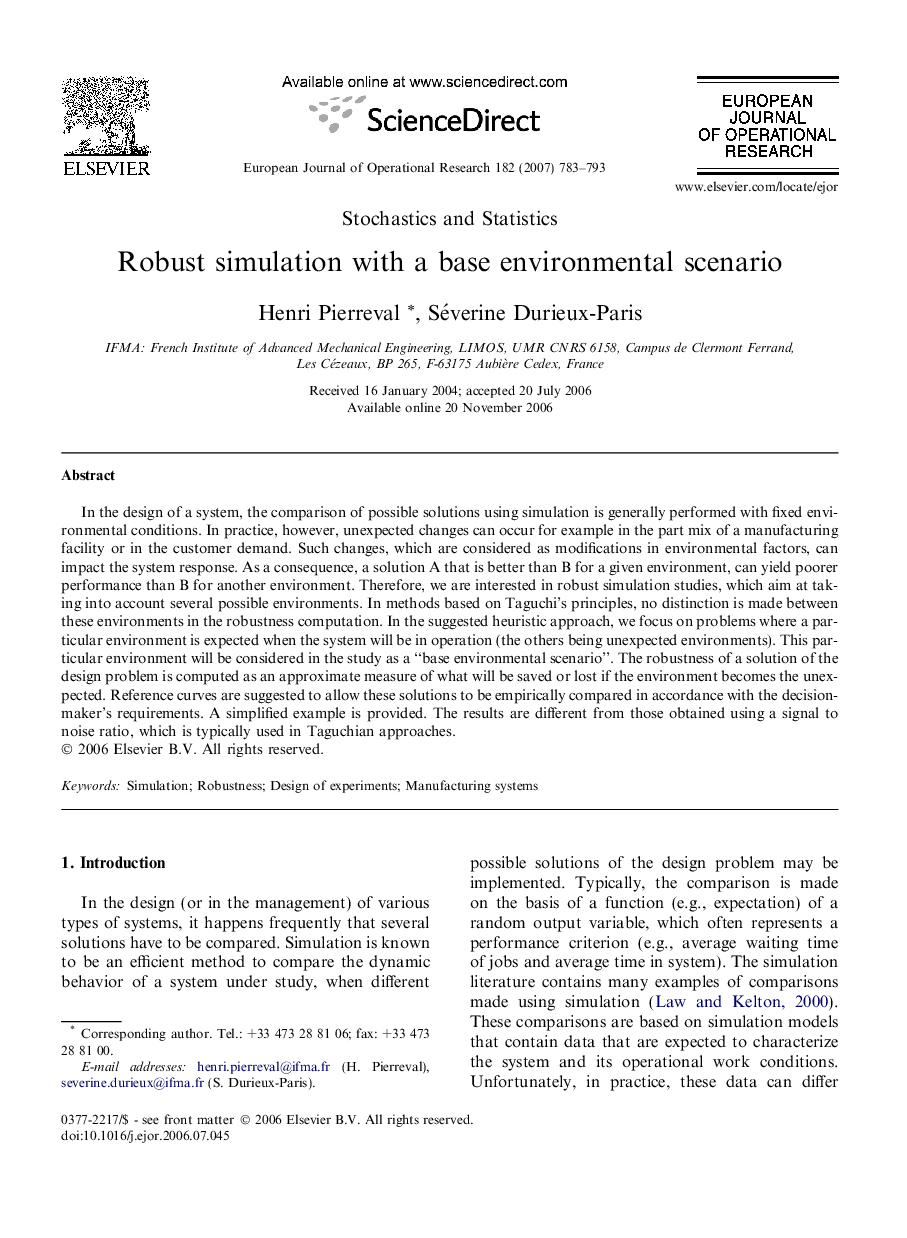| Article ID | Journal | Published Year | Pages | File Type |
|---|---|---|---|---|
| 477763 | European Journal of Operational Research | 2007 | 11 Pages |
In the design of a system, the comparison of possible solutions using simulation is generally performed with fixed environmental conditions. In practice, however, unexpected changes can occur for example in the part mix of a manufacturing facility or in the customer demand. Such changes, which are considered as modifications in environmental factors, can impact the system response. As a consequence, a solution A that is better than B for a given environment, can yield poorer performance than B for another environment. Therefore, we are interested in robust simulation studies, which aim at taking into account several possible environments. In methods based on Taguchi’s principles, no distinction is made between these environments in the robustness computation. In the suggested heuristic approach, we focus on problems where a particular environment is expected when the system will be in operation (the others being unexpected environments). This particular environment will be considered in the study as a “base environmental scenario”. The robustness of a solution of the design problem is computed as an approximate measure of what will be saved or lost if the environment becomes the unexpected. Reference curves are suggested to allow these solutions to be empirically compared in accordance with the decision-maker’s requirements. A simplified example is provided. The results are different from those obtained using a signal to noise ratio, which is typically used in Taguchian approaches.
